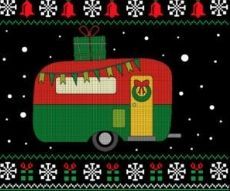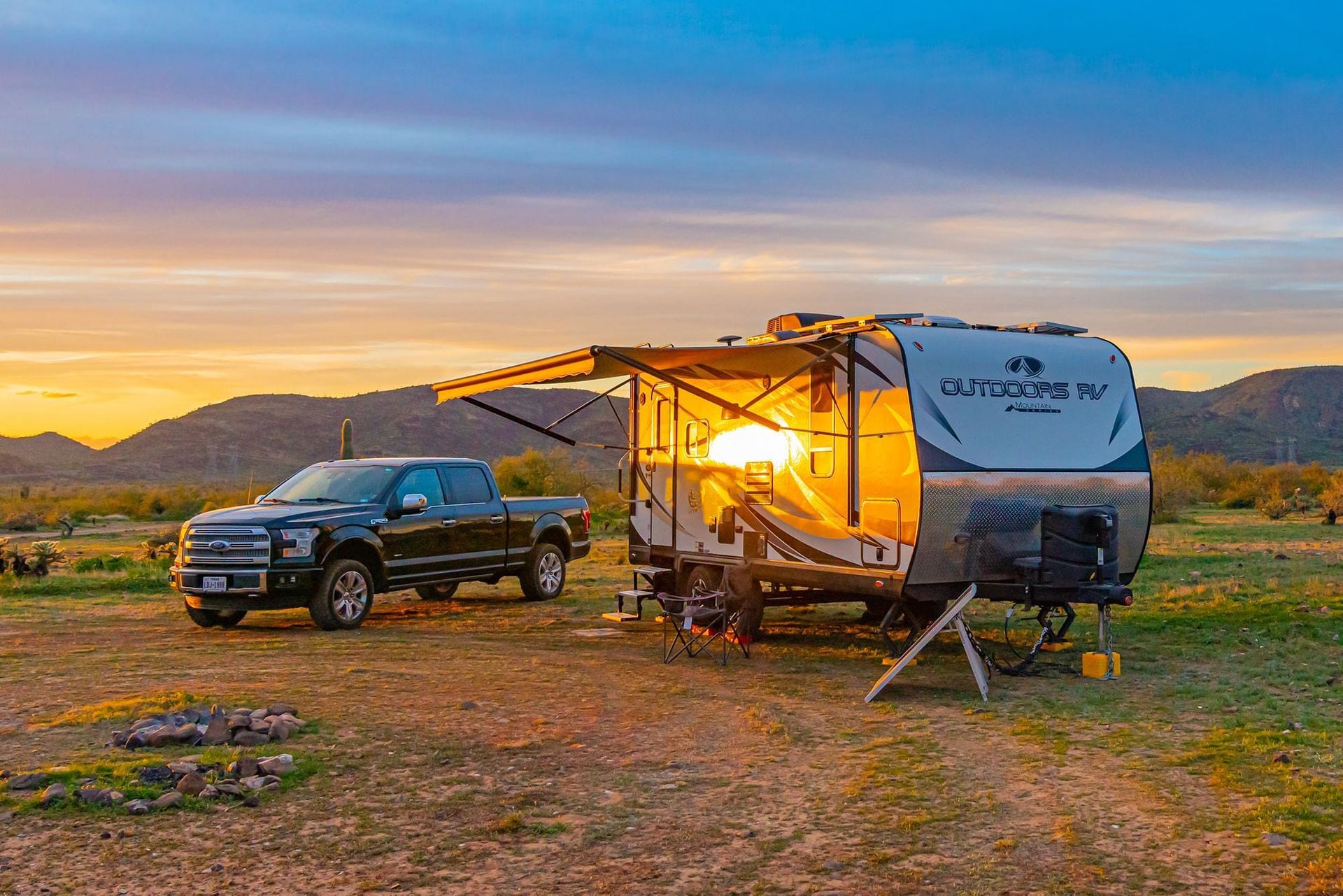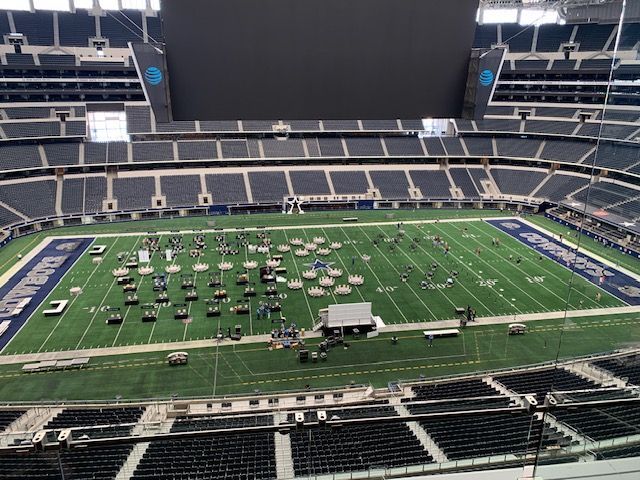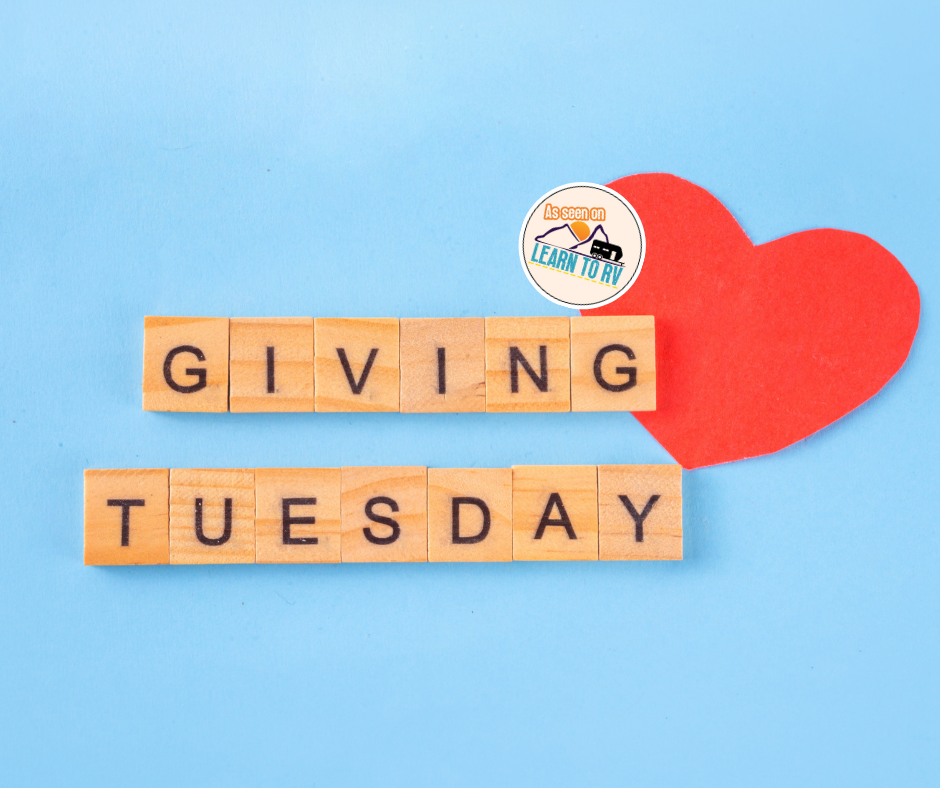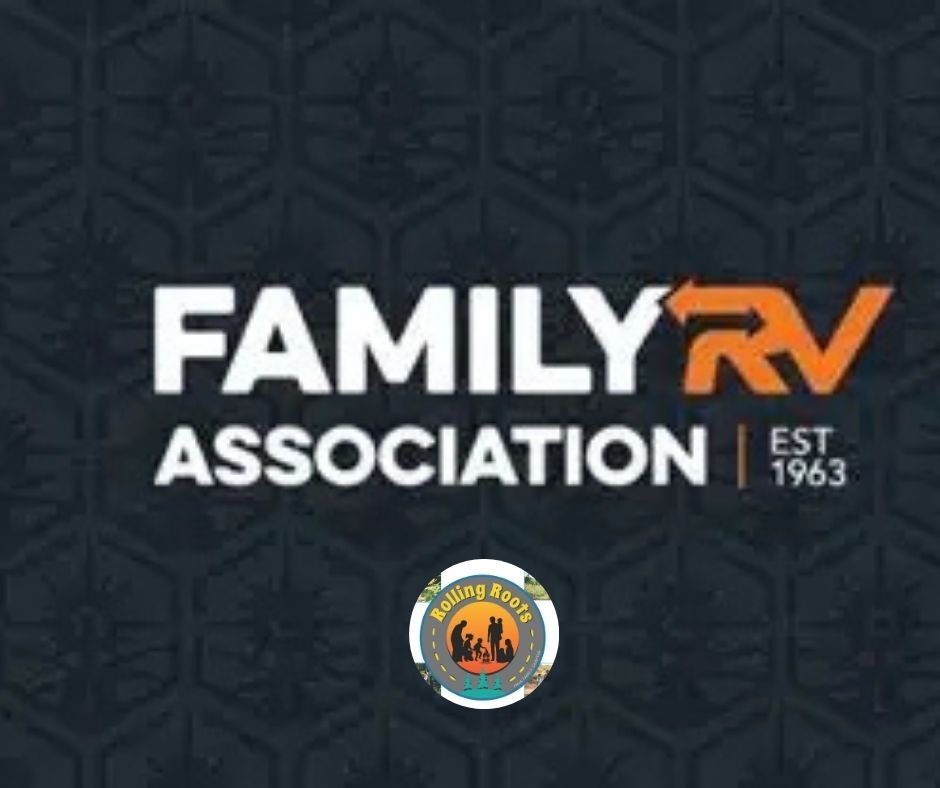Hitching My Fifth Wheel – A Pictorial
Doug S • May 9, 2025
As a follow-on to my Hitching and Unhitching My Fifth Wheel post, I decided that a pictorial view of each step would be useful. I tried to make sure that everything is covered as I did each step. If there is anything different that you do or can recommend, please let me know in the comments.
- Not shown- make sure that you’re prepared for hitching by verifying the following:
- Wheels are chocked (they should be any time the camper is unhitched; but double-check it)
- Rear stabilizers are retracted, and any triangulating stabilizers are loose so that the landing gear is able to be raised/lowered as needed
- Ensure that anything that you leave in the truck bed is properly and fully secured – the force of air coming down off of a fifth wheel will suck things out of your truck bed. I’ve heard tell of a person reporting a 80 lb. grill and others of firewood being sucked out.
- If needed by your hitch, ensure that the hitch is “open” (handle open/jaws open/bar disengaged).
- Lower your tailgate. (Some people either remove their tailgate entirely or use a notched tailgate ; I use my regular tailgate and just raise/lower it as needed as I like that it locks and the built-in rear view camera.)
- If you have a
king pin lock
, remove it.
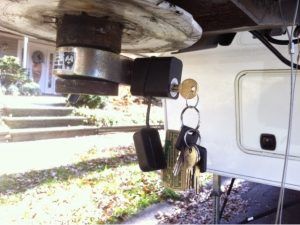
(Link to blog entry on fifth wheel security) - Raise or lower the fifth wheel so that it is slightly lower than the coupler on the hitch. You may need to adjust this over the next couple of steps a time or two if you’re hitching up alone; if you have a partner, they can raise/lower it when you get the hitch and king pin close together.
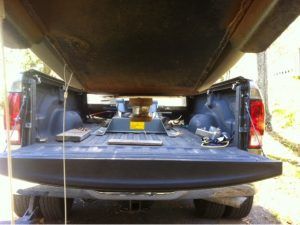 Special note about helpers – they should not be between the truck and camper (or even under the overhang of the camper) when the truck is in motion; off to the side is fine, but never between.
Special note about helpers – they should not be between the truck and camper (or even under the overhang of the camper) when the truck is in motion; off to the side is fine, but never between. - Back up the truck by looking through the rear window to line the hitch up with the kingpin. Watch your tailgate to ensure that it won’t make contact with the camper; while rare, it happens and if it is going to- you are going to need to raise the tailgate after you get the king pin inside of the truck bed but before it reaches the hitch.
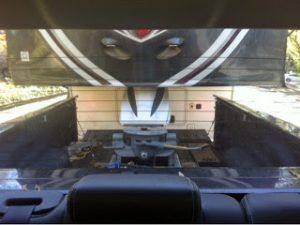
(excuse the clearly filthy window!) - Here you can see that the king pin will properly ride up the hitch.

- Next I back gently
under/into the hitch. On my
B&W hitch
, the handle closes when the hitch is properly latched; on others- refer to your manual to know when the hitch locks in place (if at all, you may have to continue onto the steps below).
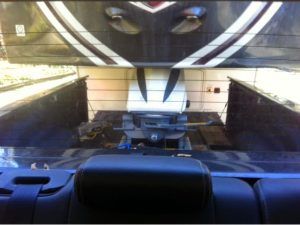
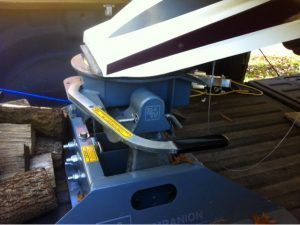
- Visually
verify that the jaws are closed around the king pin. (or bar, or whatnot in the case of your hitch)
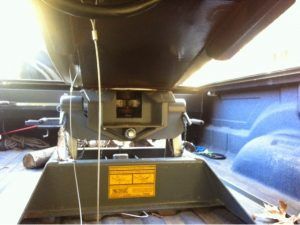
- Here’s one of my favorite purchases that I don’t use nearly as much as I should. It’s a
step that fits over the tire
to make it easier to reach the fifth wheel hitch.
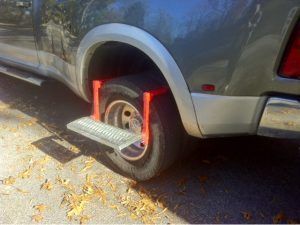
- Pin the hitch in the locked position. (or latch the bar or whatever other hitches do; as well, if you use anything like
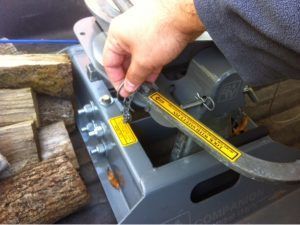
- Plug in the camper’s umbilical cord (aka 7-pin connector). This gives you lights and brakes. (Note, on some trucks- this is plugged into the bumper. The
in-bed plugin
is handy, but not required.)
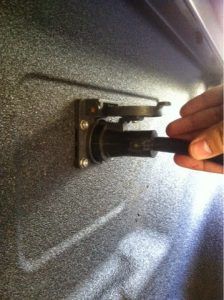
- Connect the emergency breakaway switch for the trailer brakes in the hellish but unlikely event that the camper comes separated from the truck. I connect mine to a corner tie down on the truck. Others use part of the hitch. Note, it’s not a bad idea to check that the pin box end of the breakaway cable is firmly plugged into its box at this time.
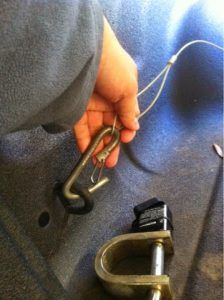
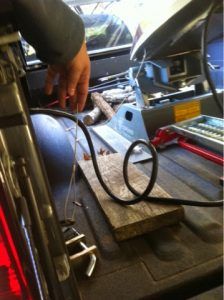
- Close your tailgate.
- Next up is a pull test. Raise the landing gear so that the camper is just off of the ground. (Remember, your wheel chocks should still be in place.)
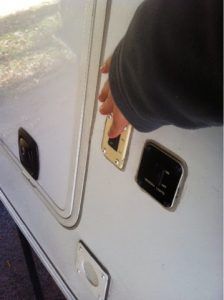
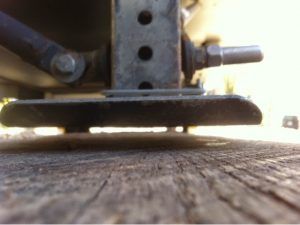
- In the truck, release the emergency brake and engage the trailer brakes. You’re going to attempt to pull the truck out from under the camper; remember, this requires a significant amount of throttle to overcome 2,000+ pounds of pin weight.
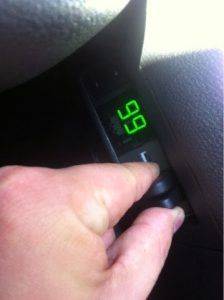
- Once you’re certain that you are properly hitched, you can fully retract the landing gear and inner legs.
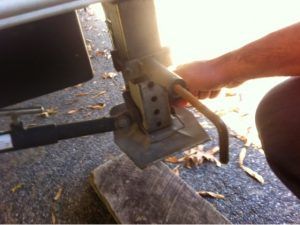
- Remove the wheel chocks. (from both sides!)
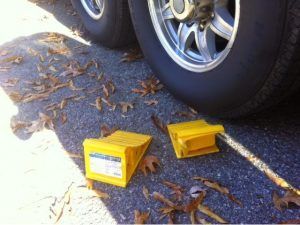
- Before you roll out- do a walk around! You need to do at least 1, if not 2 trips around the camper and truck. You need to check high and low. Check the roof line (specifically look at your TV antenna); check your tires; make sure all of your windows, hatches, and doors are closed and locked; double check the hitch, power cord, and breakaway cable; check as best as you can for brake lights and turn signals.(Note, some folks do their walk around after disconnecting the wheel chocks; I do it before so that I can stow my wheel chocks and ensure those hatches are closed and locked.)
A walk around is required before every departure (including rest areas, lunch stops, etc.) no matter how short of a stop.
Other blogs you might like...
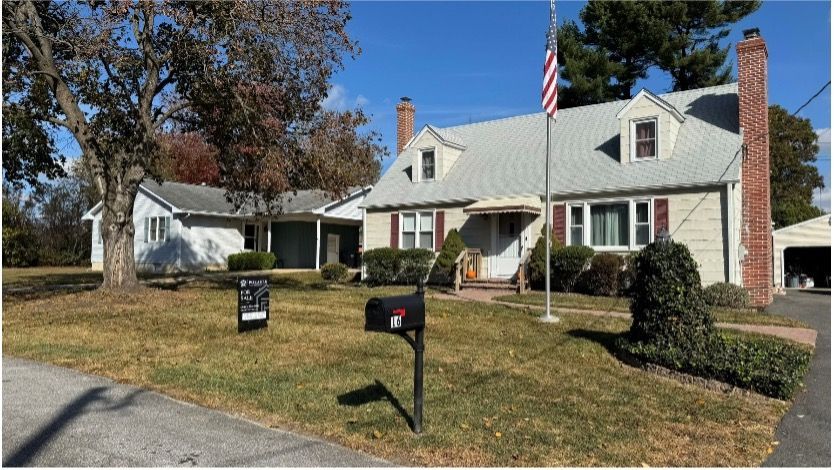
By Ashley Gallaher
•
December 18, 2025
We recently had the chance to sit down with Jennifer, one of the hosts of the Learn to RV Podcast, and it was a great conversation that took us back to the very beginning of our full-time RV journey. In the podcast, we shared who we are as a family, why we chose to sell the house, get rid of (most of) our stuff, and hit the road. We talked about what life really looks like when your home has wheels. It was less about highlight reels and more about honest moments, learning as we go, and figuring things out one mile at a time

By Kirsten McCormick
•
December 11, 2025
Picture this: Ask your teenager what gifts they received last Christmas. Now ask them about their most memorable adventure. Which question sparks more enthusiasm and detailed stories? The truth is, most physical gifts—even those met with initial excitement—often end up collecting dust, breaking, or being outgrown as interests change. But experiences? They become part of who we are, weaving themselves into the fabric of our memories and shaping our character in lasting ways.
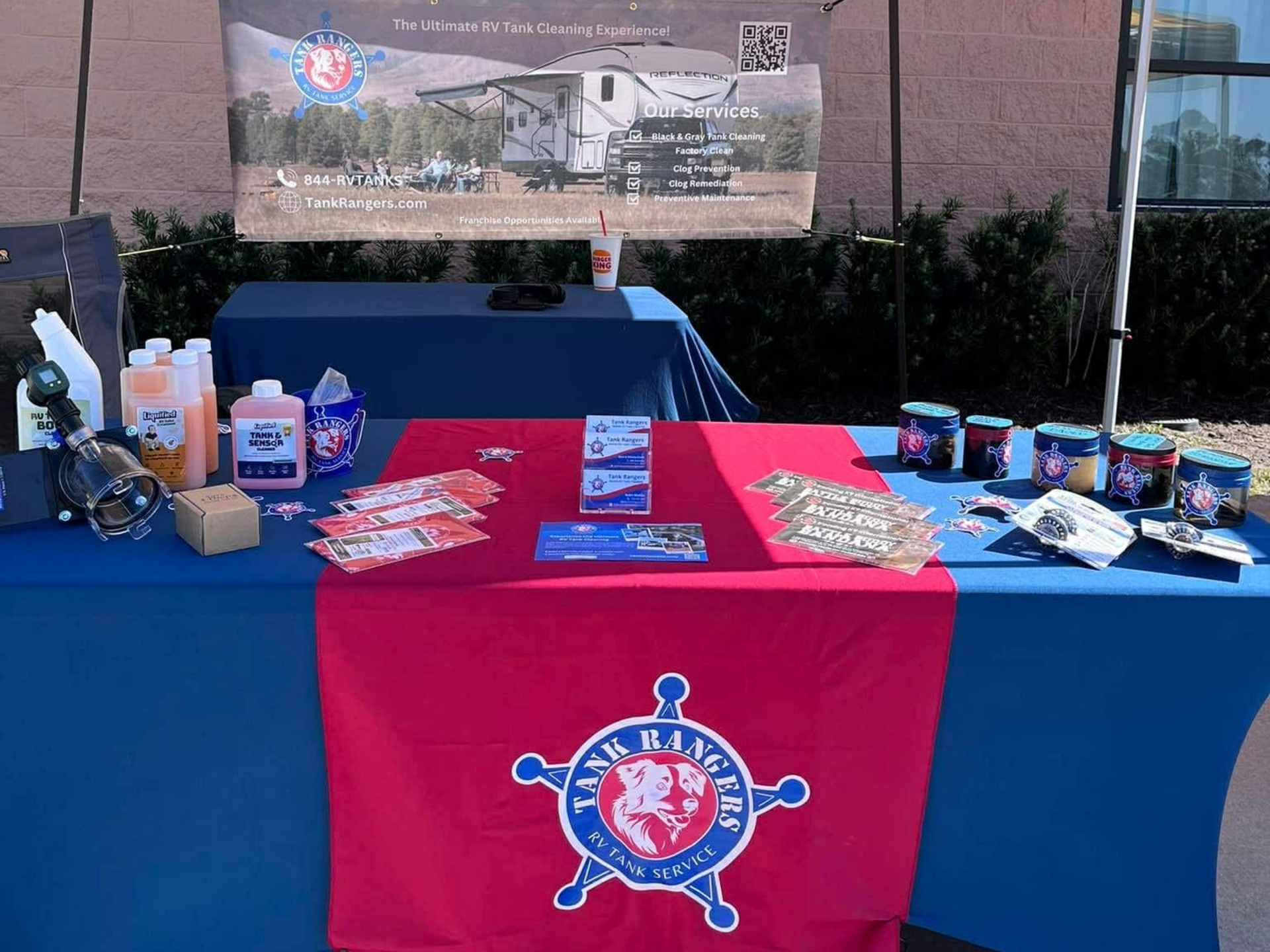
By Jennifer Aggio
•
December 4, 2025
Let's talk about the thing nobody wants to talk about—but every RVer deals with: RV tank problems . Foul odors. Clogged black tanks. Inaccurate sensors. Slow drainage. The dreaded poop pyramid. Sound familiar? Here's what most RVers don't realize: your onboard tank flush system isn't enough . Those built-in sprayers don't penetrate buildup, remove struvite stones, or scrub away mold and sludge that accumulates over time. That's where professional RV tank cleaning comes in—and that's where Tank Rangers steps up. Tank Rangers is a nationwide RV tank cleaning service with nearly three dozen locations across the country, offering professional hydro-jetting for both black tanks and gray tanks. Whether you're dealing with sensor issues, stubborn odors, or just want preventative maintenance, Tank Rangers provides mess-free, thorough cleaning that gets your tanks back to factory condition. In this guide, we're covering why professional tank cleaning matters, what happens during service, common RV tank myths, DIY maintenance tips, and how to find Tank Rangers near you. Want to hear the full story? We sat down with founder Gabe on our Community Spotlight podcast episode!


